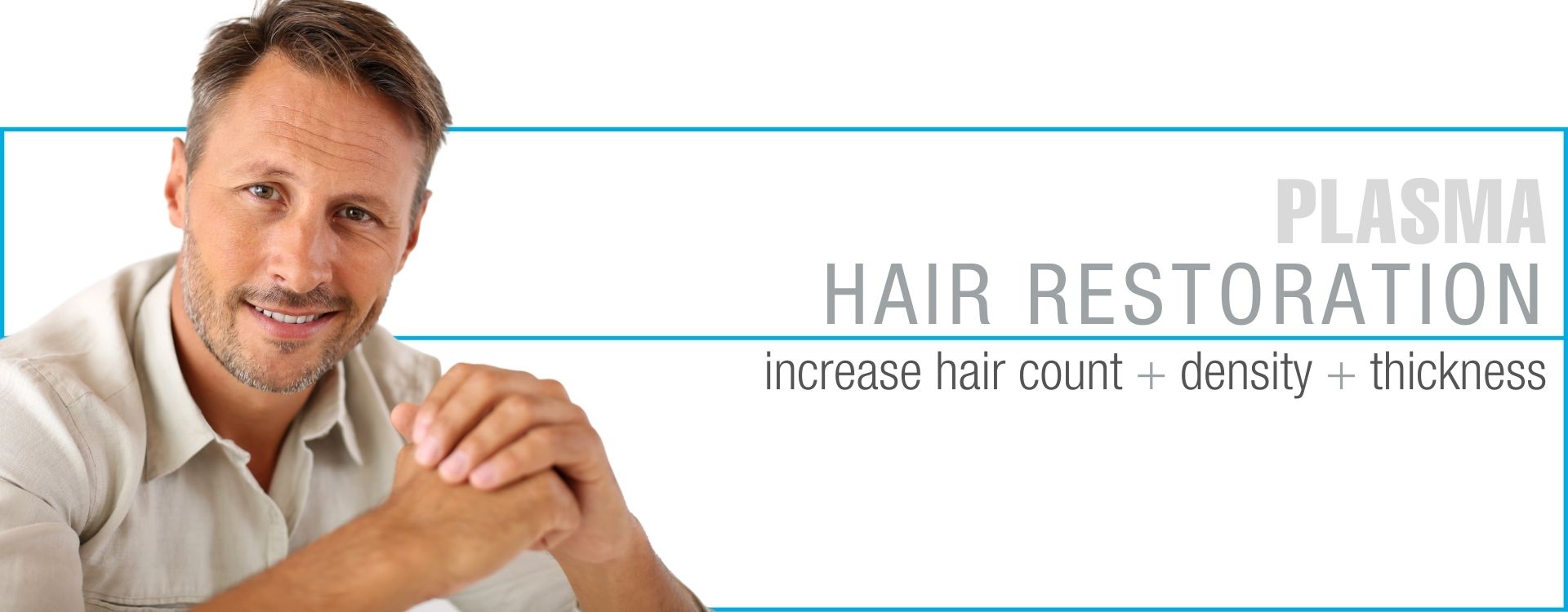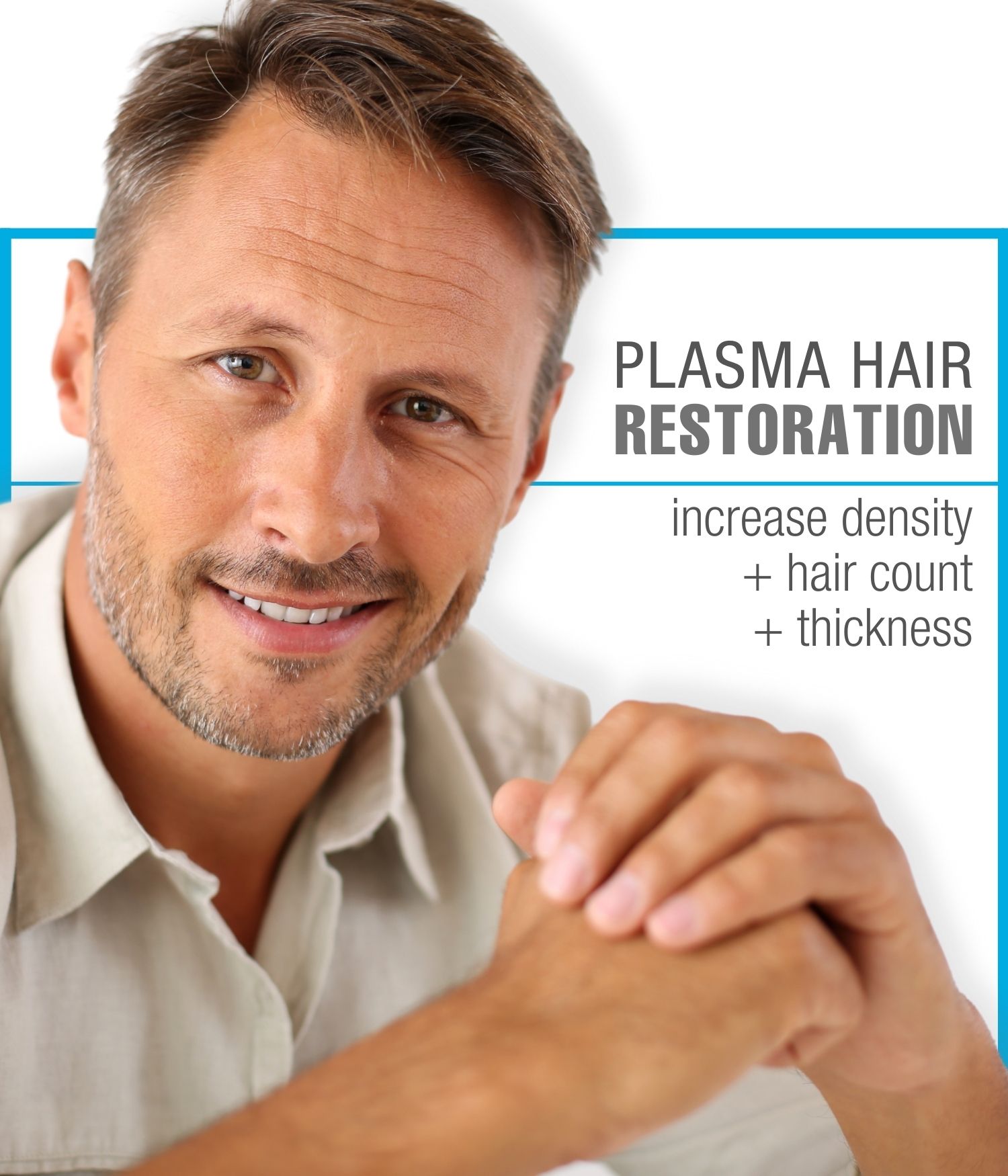

Schedule a free consultation
By submitting this form you agree to be contacted via phone/text/email.
Plasma Hair Restoration
HGF (human growth factor) or Plasma Hair Restoration is a nonsurgical hair-loss treatment during which tiny bloods cells extracted from your own blood are injected into areas of your scalp with thinning hair. While HGF is not yet FDA-approved for hair loss, the research done so far finds HGF to be effective for both age-related hair loss and alopecia areata, a disease that causes hair loss in young and otherwise healthy people.
It’s considered a safe, relatively inexpensive, and less invasive alternative treatment option than surgery, and the doctors who perform it say it can stimulate the follicles and slow down the rate of hair loss. In some cases, it may even help new hair grow.
Platelets in your blood play a role in clotting and healing. They are the cells that contain the cell signaling agents that quarterback, or orchestrate, the human body’s tissue rejuvenation and healing systems. Plasma is the liquid in blood that carries the platelets, along with red blood cells and white blood cells.
During an HGF procedure, the doctor separates platelets from your blood and processes them to concentrate the growth factors. Once injected into your scalp, HGF increases blood flow to the hair follicles, stimulates the growth of new follicles, and lengthens the anagen (active) phase of the hair cycle to promote new hair growth.
HGF injections originated in Europe more than a decade ago. Today, doctors use it for a variety of medical applications, including helping injured joints and wounds to heal more quickly and treating aging skin and hair loss.
Benefits of Plasma Hair Restoration
- Plasma Hair Restoration is nonsurgical, with no downtime or significant safety risks. The entire procedure takes only about 30 minutes.
- A 2019 review of studies finds that overall, both men and women have positive results in terms of increased hair thickness and regrowth.
- The primary objective of the plasma therapy is to slow down or appear to halt the progression of hair loss. A minority of patients will experience slight regrowth.
- This treatment costs significantly less than hair transplant surgery, because it’s a non-surgical treatment, and is not guaranteed to grow new hair, unlike hair transplant surgery.
- RealSelf members who say it’s “Worth It” found the procedure to be virtually painless and saw significant improvements in hair thickness and fullness.
What happens during a plasma treatment for hair loss?
To start, your doctor or a physician’s assistant will draw a small amount of your blood. You’ll wait for about 10 minutes while your blood is run through a centrifuge to separate red blood cells from the plasma and concentrate the tiny blood cells.
Then your doctor may apply a numbing cream to your scalp’s thinning areas before injecting the HGF (human growth factor) over areas of hair loss.
The entire process should take about 10 to 20 minutes, and you should be fine going back to work right after.
When will you see HGF or plasma hair restoration results?
If HGF works for you, you’ll see results within about four months. However, it’s not guaranteed.
Research on the results of HGF injections in both men and women has been generally positive, although most of the studies have been small. For a 2016 study published in the journal Dermatologic Surgery, researchers tested HGF in 25 people with hair loss. They injected HGF in one half of participants’ heads and an inactive treatment (placebo) in the other half, to see the difference. After three treatments, spaced one month apart, there were improvements in the number and thickness of hairs. Another 2015 study found improvements in hair counts, thickness, and root strength.
Hair restoration as a result of HGF injections will depend a lot on your gender, your age, your genes, your hormones, and other factors, including the amount of hair you had to begin with.
Adopting a healthier lifestyle will increase your chance of success. Eat a balanced diet and stop smoking and using other nicotine products, which disrupt the blood supply your hair needs to grow.
You’ll need repeated injections to see results. The exact number will depend on factors like the amount and pattern of hair loss and your age. Typically, you’ll start with one injection every four to six weeks, for three to six treatments months. Then you’ll space them out to once every three to four months, for up to two years.
